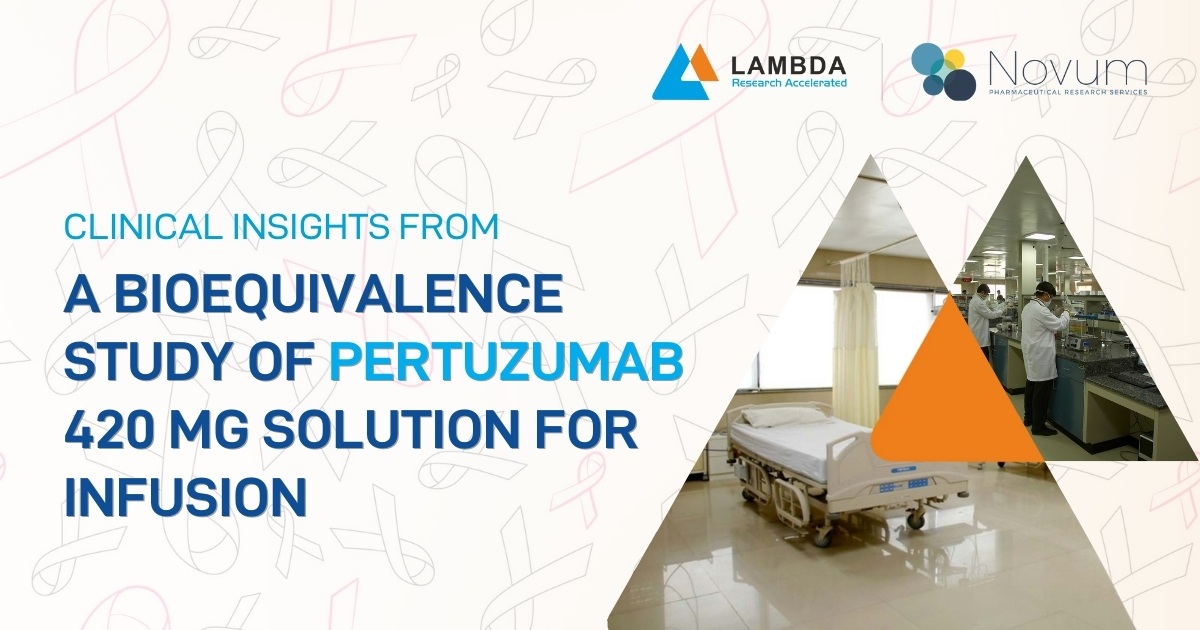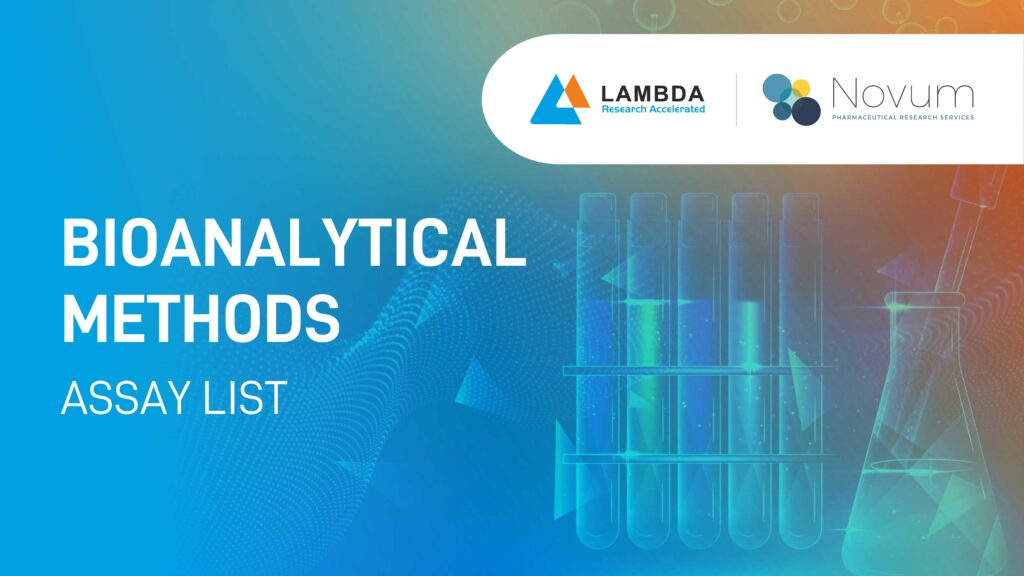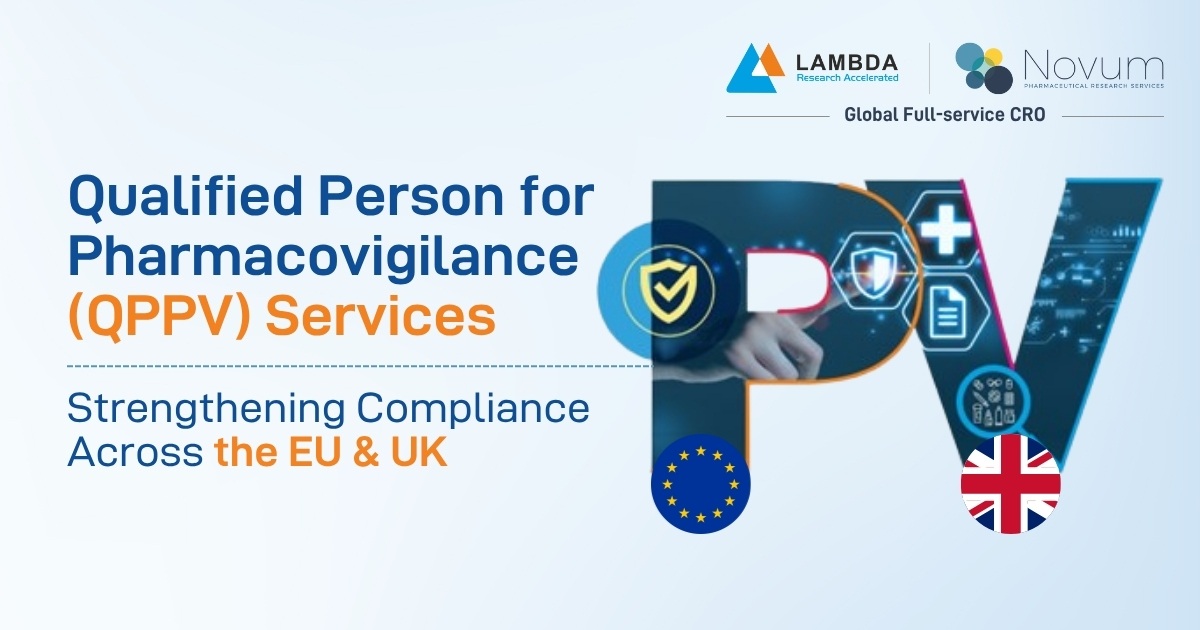In the complex and high-stakes world of oncology clinical trials, selecting the right endpoints is critical to ensuring meaningful outcomes, robust data, and regulatory success. Endpoints serve as the measurable outcomes that determine whether a treatment is effective, safe, and worthy of advancing through the clinical development pipeline. At Lambda Therapeutic Research and Novum Pharmaceutical Research Services, we understand the nuances of oncology clinical trial design and the pivotal role that endpoint selection plays in achieving trial objectives. In this blog, we explore the key considerations for choosing oncology endpoints, provide insights into their application across trial phases, and optimizing study design.
Why Endpoints Matter in Oncology Clinical Trials
Endpoints in oncology clinical trials are the foundation for evaluating a treatment’s efficacy, safety, and overall impact on patients’ lives. They provide the measurable criteria that researchers, clinicians, and regulatory authorities rely on to assess whether a therapy delivers meaningful clinical benefits. Poorly chosen endpoints can lead to ambiguous results, regulatory setbacks, or missed opportunities to demonstrate a therapy’s true value. Conversely, well-selected endpoints align with the trial’s objectives, streamline data collection, and enhance the likelihood of regulatory approval and clinical adoption.
Oncology clinical trials present unique challenges for endpoint selection due to the heterogeneity of cancer types, the complexity of disease progression, and the need to balance short-term outcomes with long-term patient benefits. Additionally, regulatory agencies like the FDA and EMA often have specific expectations for endpoints depending on the trial phase and the therapeutic context, making strategic endpoint selection even more critical.
Key Oncology Endpoints
Oncology endpoints can be broadly categorized into clinical, surrogate, and patient-reported outcomes. Each plays a distinct role based on the phase of development and mechanism of action of the investigational product. Below, we outline the most commonly used endpoints in oncology clinical trials, their definitions, and their relevance across different trial phases.
| Endpoint | Definition | Relevance | Pros | Cons | When to Use |
|---|---|---|---|---|---|
| Overall Survival (OS) | OS measures the time from randomization or treatment initiation until death from any cause. | Considered the gold standard in oncology clinical trials, OS directly reflects a treatment’s impact on patient survival. It is highly relevant in pivotal Phase III trials, where demonstrating a survival benefit is often a primary requirement for regulatory approval. | Objective, universally accepted, and clinically meaningful. | Requires long follow-up periods, which can delay trial results, and may be confounded by subsequent therapies. | Ideal for late-phase trials evaluating therapies with curative intent or significant survival impact. |
| Progression-Free Survival (PFS) | PFS measures the time from randomization or treatment initiation until disease progression (based on imaging or clinical criteria) or death. | PFS is widely used in Phase II and III trials as a surrogate endpoint for OS, particularly when rapid disease progression is expected or when OS data may take years to mature. | Shorter follow-up time than OS, sensitive to treatment effects, and less influenced by post-progression therapies. | Relies on standardized criteria for progression (e.g., RECIST), which can introduce variability, and may not always correlate with OS. | Suitable for trials targeting advanced or metastatic cancers where delaying progression is a key goal. |
| Objective Response Rate (ORR) | ORR is the proportion of patients achieving a complete response (CR) or partial response (PR) to treatment, typically assessed using imaging-based criteria like RECIST. | ORR is a common primary endpoint in Phase II trials to evaluate a therapy’s anti-tumor activity. It is also used in accelerated approval pathways when rapid evidence of efficacy is needed. | Provides early evidence of treatment activity, relatively quick to measure, and objective. | Does not capture duration of response or long-term benefits, and may not predict OS. | Best for early-phase trials or studies of novel therapies in highly refractory populations. |
| Disease-Free Survival (DFS) | DFS measures the time from treatment completion (e.g., surgery or adjuvant therapy) until disease recurrence or death. | DFS is primarily used in adjuvant settings, where the goal is to prevent cancer recurrence after curative-intent treatment. | Clinically meaningful in early-stage cancers, shorter follow-up than OS. | Requires clear definitions of recurrence and may not always correlate with OS. | Ideal for trials evaluating adjuvant therapies in early-stage cancers. |
| Time to Progression (TTP) | TTP measures the time from randomization or treatment initiation until disease progression, excluding deaths from other causes. | TTP is similar to PFS but focuses solely on disease progression, making it useful in trials where non-cancer-related deaths are common. | Focused on disease-specific outcomes, less confounded by unrelated mortality. | Less comprehensive than PFS and may not reflect overall patient benefit. | Useful in trials with high rates of non-cancer mortality or when progression is the primary concern. |
| Patient-Reported Outcomes (PROs) | PROs capture patients’ self-reported experiences, such as quality of life (QoL), symptom burden, or functional status, using validated questionnaires. | PROs are increasingly important in oncology clinical trials to demonstrate a therapy’s impact on patients’ daily lives, particularly when survival benefits are modest. | Reflects patient perspective, supports patient-centered drug development. | Subjective, requires validated tools, and may be influenced by external factors. | Valuable in late-phase trials or studies comparing therapies with similar survival outcomes. |
| Quality of Life (QoL) | Assesses patients’ overall well-being, including physical, mental, and social aspects, using validated questionnaires. | Important in trials where survival gains are minimal or toxicities significantly impact daily living. | Emphasizes patient experience; aligns with patient-centered drug development. | Challenging to quantify consistently; data interpretation may vary due to subjectivity. | Recommended as a secondary endpoint in pivotal trials or for therapies with significant side effects. |
| Biomarker-Based Endpoints | Biomarker-based endpoints measure specific biological indicators (e.g., circulating tumor DNA, protein expression) that reflect treatment response or disease status. | These endpoints are gaining traction in precision oncology, particularly in early-phase trials of targeted therapies. | Highly specific, can provide early signals of efficacy, and support personalized medicine. | Requires validation to ensure clinical relevance, and regulatory acceptance may vary. | Best for trials of targeted therapies or studies exploring novel mechanisms of action. |
Choosing the Right Endpoint: Key Considerations
Right endpoint selection depends on several factors, including the trial phase, cancer type, treatment goals, and regulatory requirements. Here are practical tips to guide your endpoint selection process:
1. Align with Trial Phase and Objectives
- Phase I Trials: Focus on safety and preliminary efficacy. Endpoints like dose-limiting toxicities (DLTs), maximum tolerated dose (MTD), and objective response rate (ORR) are common.
- Phase II Trials: Evaluate treatment activity and feasibility. ORR and progression-free survival (PFS) are often primary endpoints, with overall survival (OS) as a secondary endpoint.
- Phase III Trials: Demonstrate clinical benefit for regulatory approval. OS or PFS are typically primary endpoints, with patient-reported outcomes (PROs) and quality of life (QoL) as secondary endpoints.
- Phase IV/Post-Marketing Studies: Assess long-term outcomes and real-world effectiveness. OS, disease-free survival (DFS), and PROs are key.
2. Consider Disease Characteristics
- Cancer Type and Stage: Endpoints should reflect the natural history of the disease. For example, DFS is relevant for early-stage cancers, while PFS is more appropriate for metastatic disease.
- Disease Kinetics: Rapidly progressing cancers may benefit from PFS or ORR, while slower-growing cancers may allow for OS as a primary endpoint.
- Heterogeneity: In cancers with diverse molecular subtypes, biomarker-based endpoints may be more informative than traditional clinical endpoints.
3. Balance Clinical and Regulatory Needs
- Regulatory Expectations: Consult regulatory guidelines (e.g., FDA, EMA) to ensure endpoints meet approval criteria. For example, OS is preferred for full approval, but PFS or ORR may support accelerated approval.
- Surrogate Endpoints: When using surrogate endpoints like PFS or ORR, validate their correlation with clinical benefit (e.g., OS) to strengthen regulatory submissions.
- Patient-Centricity: Incorporate PROs to address regulatory and payer demands for patient-centered outcomes.
4. Account for Practical Constraints
- Follow-Up Duration: Endpoints like OS require long follow-up, which may delay results. Consider surrogate endpoints for faster data readout.
- Data Collection: Ensure endpoints are measurable with available tools (e.g., imaging for RECIST, validated questionnaires for PROs).
- Sample Size: Power calculations should account for the expected effect size and variability of the chosen endpoint.
Partnering for Success: Lambda & Novum’s Expertise
Choosing the right endpoints in oncology clinical trials is both an art and a science, requiring a deep understanding of disease biology, clinical trial design, and regulatory landscapes. At Lambda & Novum, we are committed to guiding our clients through this critical process, ensuring that every trial is designed for success. We bring decades of experience in designing and executing oncology clinical trials across all phases. Our multidisciplinary team of clinical researchers, biostatisticians, and regulatory experts works closely with sponsors to select endpoints that align with scientific, clinical, and regulatory goals. Here’s how we can support your oncology trial:
- Customized Trial Design: We tailor endpoint selection to your therapy’s mechanism of action, target population, and trial objectives.
- Regulatory Guidance: Our regulatory affairs team ensures endpoints meet global standards, facilitating smooth interactions with agencies like the FDA and EMA.
- End-to-End Support: From protocol development to data analysis, we provide comprehensive CRO services to streamline your trial
Overcoming the Complexities of Oncology Clinical Trials
At Lambda & Novum, our commitment to advancing cancer treatment is reflected in our extensive experience in oncology clinical trials. With a strong portfolio that includes over 290 clinical trials spanning 15+ therapeutic areas, oncology remains a cornerstone of our expertise.
80+
Oncology Clinical Trials
5100+
Patients
1000+
Global Sites
Lambda has a proven track record in cancer clinical trials, having conducted 80+ studies across a range of indications. Our expertise spans common cancers such as breast cancer (including metastatic and triple-negative), lung cancer (NSCLC), and prostate cancer, as well as complex and less common cancers, including ovarian, gastric, and bladder cancers. Additionally, we have experience in hematological malignancies (such as lymphoma and myelodysplastic syndrome), pediatric cancers, and various other conditions related to cancer or its treatment.
With experience enrolling over 5100 patients across a network of 1000+ sites, we efficiently manage large-scale, complex trials while upholding the highest standards of patient care and data integrity. Our expertise also extends to biosimilar development, where we have significant experience with key oncology therapies, including Bevacizumab, Denosumab, Trastuzumab, Pertuzumab, Rituximab, and Trastuzumab Emtansine.
Our end-to-end capabilities—including medical imaging, biostatistics, bioanalytical & pharmacovigilance services—allow us to provide comprehensive solutions for our clients. By maintaining the highest standards of quality and regulatory compliance, we ensure reliable, high-quality trial outcomes. Our successful regulatory submissions to the USFDA, EMA, and ANVISA highlight our deep understanding of global regulatory frameworks and our expertise in navigating the complexities of the approval process.
Leverage Lambda & Novum’s extensive experience & proven track record to accelerate your Oncology clinical trials. Get in touch with our team of experts. Let’s make Progress together in the Fight Against Cancer.
About Lambda
Lambda & Novum delivers comprehensive, end-to-end clinical research services to the innovator, biotech, and generic pharmaceutical industries worldwide. With a strong global presence in India, the USA, Canada, the UK, Spain and Poland, we bring specialized expertise to every project. Our focus on secure IT infrastructure and automation ensures timely project delivery and strict adherence to international regulatory standards. Lambda’s exemplary regulatory track record includes over 60 successful inspections and audits by esteemed authorities, including the USFDA, EMEA, MHRA, EU member states, and other global regulatory bodies, in the past five years.
Lambda’s commitment to excellence has garnered significant recognition, including the ‘Best Indian CRO’ award from Frost & Sullivan (USA) and the ‘Great Indian Workplace’ title from UBS Transformance. Recent accolades include the ‘Regulatory Excellence’ Award at the CPhI Pharma Awards 2023 and the ‘Industry Partner of the Year’ Award at the Global Generics & Biosimilar Awards 2023.




